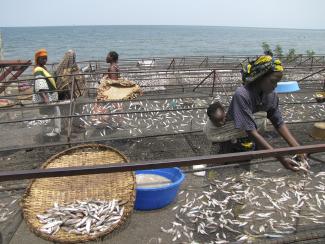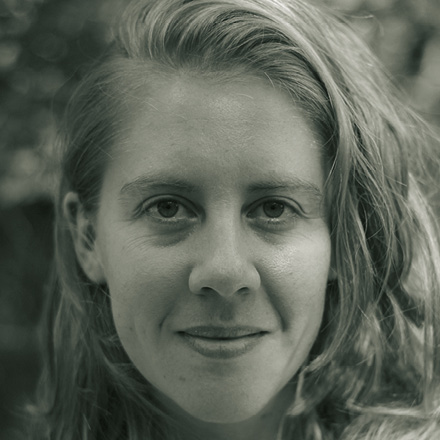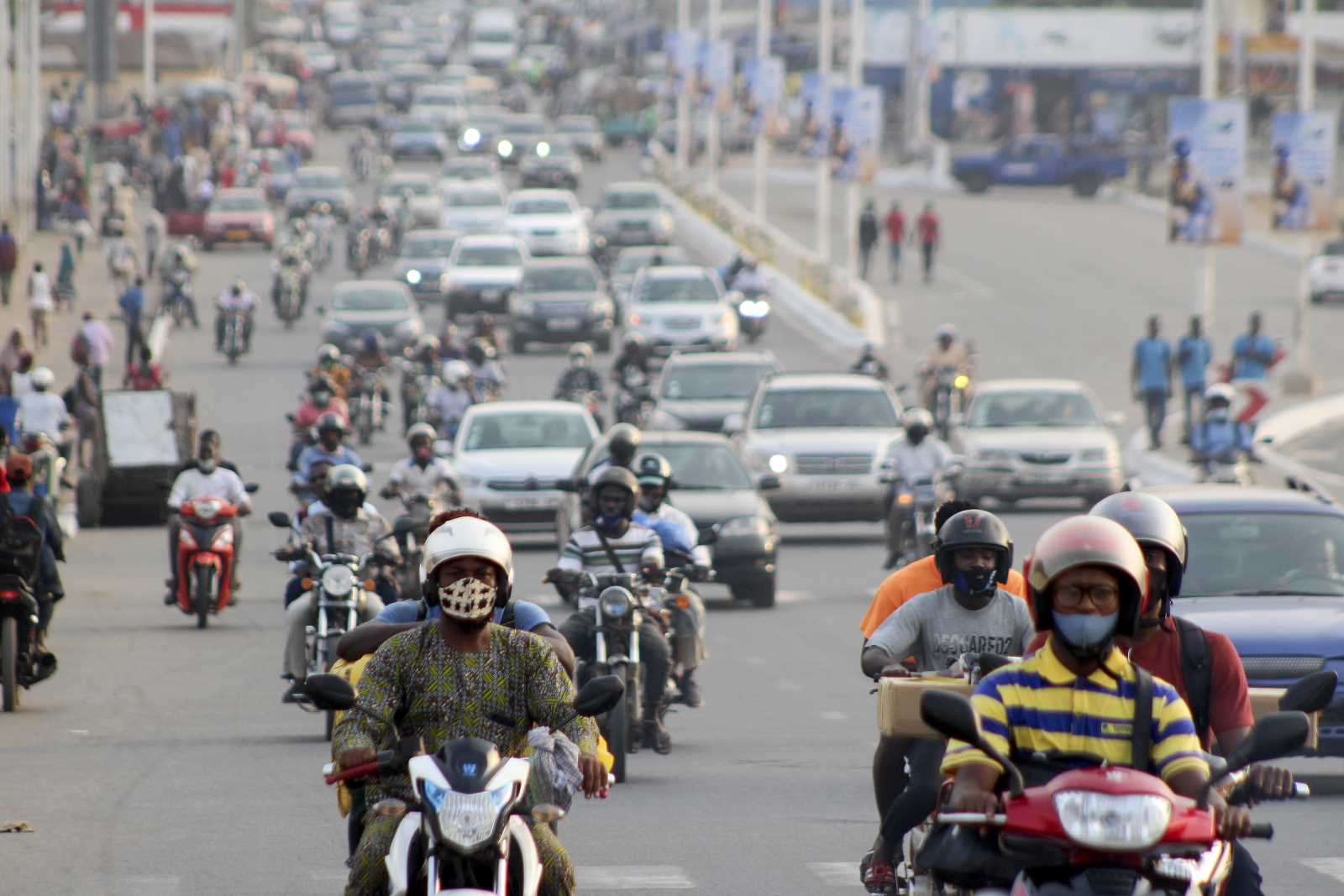Food
Need in a land of plenty

The Democratic Republic of the Congo (DRC) is blessed with great agricultural potential. It has 80 million hectares of arable land, diverse climatic conditions and abundant water resources. But this potential has barely been tapped, and the DRC is unable to feed itself. In 2012, the country spent $ 1.3 billion on food imports. This is not sustainable – and patently absurd in view of the country’s great potential.
Obviously, violent conflict that rocks various regions of the country from time to time, is exacerbating problems of poverty and low agricultural productivity. A strong agricultural sector would make a huge difference. As things are, however, the nutrition situation is extremely alarming.
The DRC was the hungriest country in the world in 2011, according to the Global Hunger Index (GHI), an annual ranking, which is published by the International Food Policy Research Institute in cooperation with the charities Welthungerhilfe and Concern Worldwide. The DRC had equally received the worst GHI scores in 2009 and 2010.
The nutrition situation in the DRC certainly supports such findings. The DRC has the highest number of undernourished persons in Africa. Close to 75 % of the total population is undernourished (UNDP 2010). The country also has the highest prevalence of malnutrition in the world.
In 2005, the Congolese Ministry of Health cited malnutrition as the underlying cause in 48 % of cases of infant mortality (WHO 2005). In 2007, 45.8 % of children suffered from stunting (low height for their age), 28.2 % were underweight and 14 % were affected by wasting (low weight for height) according to the World Health Organisation (WHO 2011). The same statistics showed that 70.6 % of children under the age of five were anemic, as were 67.3 % of pregnant women.
National survey
Data from a national household survey conducted in 2004/2005 confirm the dismal picture. Overall, 13,688 households were interviewed with a response rate of 95 %. The people surveyed reported their consumption and expenditure habits, and the resulting data allowed us to assess nutrient deficiencies both at the national and provincial levels.
The average household in the sample consumed 1,959.2 calories per day per capita. That was more than the minimum requirement of 1,706.4 calories, but less than the 2,049.8 recommended for optimal performance of daily activities. People in the sample faced deficiency in vitamin E, riboflavin, folate, vitamin B12, iron, and zinc. Average household intakes of protein and vitamin B6 were higher than both the required and recommended values of 40.4 g and 2.0 g, respectively. Due to high consumption of palm oil and cassava, which are abundantly available in the DRC, the intake of vitamins C and A far exceeded the recommended values.
Cereals made up the greatest share of per capita calorie consumption (28.9 %) of the households in our sample, followed closely by tubers (27.6 %) and fat (26.1 %). Comparatively expensive food like meat and fish, fruits and vegetables, eggs and dairy products made up less than 10 % of consumed calories.
Cereals were also the greatest source of people’s iron and zinc intake, but they did not suffice to prevent deficiency in those nutrients. For vitamin E, the most important food source was fat and oil. In terms of individual food items, the largest single contributors of vitamin E were taro, palm oil and sweet potato. While beans, cassava and sweet potato were the largest single contributors of riboflavin, most of households’ intake of riboflavin came from cereals.
Although people ate very little meat and fish, this kind of food provided all the vitamin B12 they consumed. Almost 90 % of households did not get enough vitamin B12, so increasing their meat and fish intake could erase this deficit. On the other hand, only few households lacked vitamins A, C and B6, which are found in the tubers and fats and which households consume in large amounts.
Generally speaking, female-headed households were less deficient in all nutrients than are male-headed households. This may suggest that women tend to allocate resources in a healthier way, but the average deficiencies did not take into account household composition, which may differ between male- and female-headed households. All households, however, tended to be equally deficient in vitamin B12, which is found only in animal products.
The prevalence of deficiencies across provinces varied greatly. Maniema, Bas-Congo, Kinshasa, Équateur, and the two Kasai provinces experienced nutrient deficiencies that exceeded the national levels for some nutrients and remained below national levels for others. Rates of nutrient deficiencies in Katanga and Orientale were all at or below the national average except for vitamin C in the former and riboflavin in the latter. In contrast, in Bandundu, all rates of deficiencies are above the national average. In North and South Kivu, nutrient deficiency rates were mostly above the national average. To some extent, such differences reflected the prevalence of militia violence.
Short lives
Today, life expectancy in the DRC is around 47 years for men and 51 years for women, and about 20 % of children die before reaching the age of five (Pfingu 2011, UNDP 2010). Of course, malnutrition is not the only reason, but it is a big part of the problem.
The most effective and sustainable response to the country’s alarming nutrient deficiency rates would be to significantly increase local food production. To achieve that end, the DRC needs the same kind of agriculture policy as many other sub-Saharan countries (see Kwadwo Asenso-Okyere in D+C/E+Z 2012/03, p. 104 ff.). Key investments would concern rural infrastructure, extension services, agricultural research, science and technology. The government, moreover, should facilitate and accelerate small farmers’ access to improved seeds, fertilisers and credit.
World prices of seeds and fertilisers are out of reach for most small farmers in the DRC. Under current conditions, subsidised programmes for agricultural credit, seeds and fertilisers are perfectly justifiable. However, to avoid market distortion, these programmes must nevertheless be limited in time and include the private sector in their design and implementation. To make rural development take off in the first place, however, the DRC needs peace and sustainable governance.
John Ulimwengu is a research fellow at the International Food Policy Research Institute (IFPRI) in Washington DC.
j.ulimwengu@cgiar.org
Cleo Roberts was an intern at IFPRI.
Josée Randriamamonjy is a research analyst at IFPRI.
j.randriamamonjy@cgiar.org











